Fascinating Ancient History Of Fingerprints
A. Sutherland - AncientPages.com - Fingerprints have been a source of people's great fascination and can be traced back to ancient times.
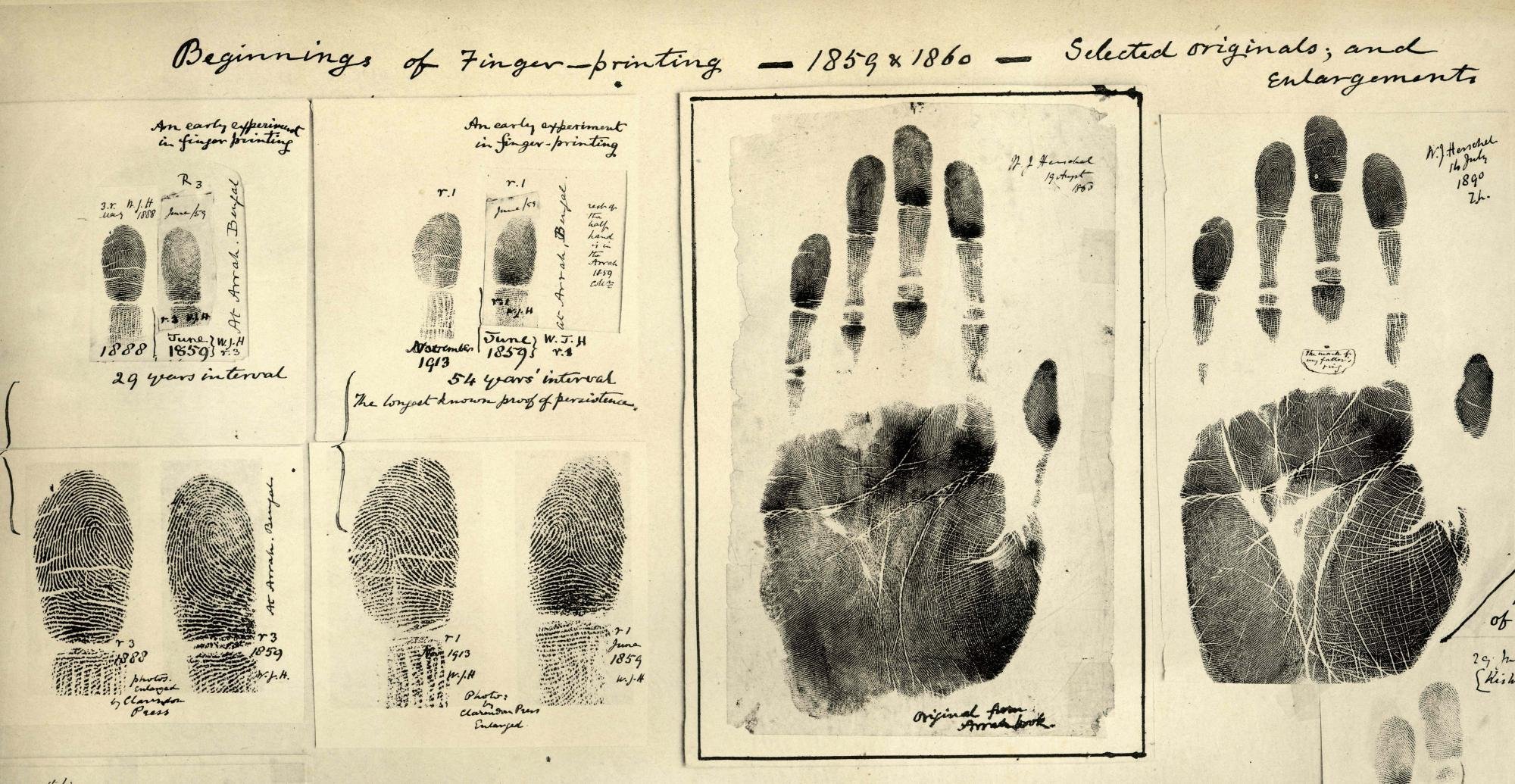 Handprints and fingerprints made by W. J. Herschel. Public Domain
Handprints and fingerprints made by W. J. Herschel. Public Domain
It is not easy today to establish whether the fingerprints were placed on the artifacts, walls, and documents intentionally or coincidentally.
The earliest records of fingerprints are dated to 7,000 BC and originate from Jericho, near the Jordan River in the West Bank of the Palestinian territories. Neolithic bricks from this ancient city contain thumbprints of ancient bricklayers, as mentioned in K. M. Kenyon's book "Archaeology of the Holy Land."
In this ancient city, bricks were found imprinted by pairs of thumbprints of the bricklayer who built a house. Circa 3,000 BC, in Mesopotamia, people placed fingerprints on clay tablets to confirm business transactions. In constructing the king's storehouse, each brick was purposely provided with a "digital impression" as finger imprints.
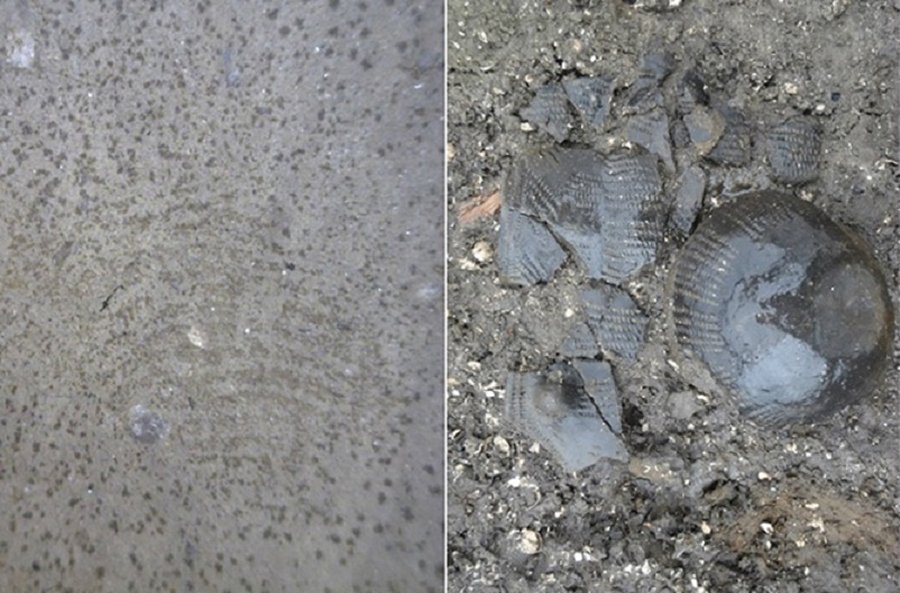 Left: The 5,500-year-old fingerprint and Right: the funnel beaker as it was unearthed. Credit: Line Marie Olesen/Museum Lolland-Falster.
Left: The 5,500-year-old fingerprint and Right: the funnel beaker as it was unearthed. Credit: Line Marie Olesen/Museum Lolland-Falster.
In ancient Egypt, a similar procedure was used to construct royal buildings. The walls of Egyptian tombs are decorated with fingerprints.
Ancient artifacts containing carvings of fingerprints, dated to 3,000 BC, were discovered in Northwest Europe at New Grange on the coast of Ireland and in Brittany, France.
Many artifacts discovered in burial chamber passages and tombs from this period were covered with fingerprint ridges. About one year ago, archaeologists unearthed pieces of a 5,500-year-old ceramic vessel from an ancient fjord east of Rødbyhavn near Lolland, Denmark, and there was an old fingerprint on it.
People lived in Nova Scotia for more than 11,000 years, as confirmed by written history and oral tradition. For example, the outline of a hand with etchings representing the ridge patterns on fingertips was once scratched into the slate rock beside Kejimkujik Lake in Nova Scotia.
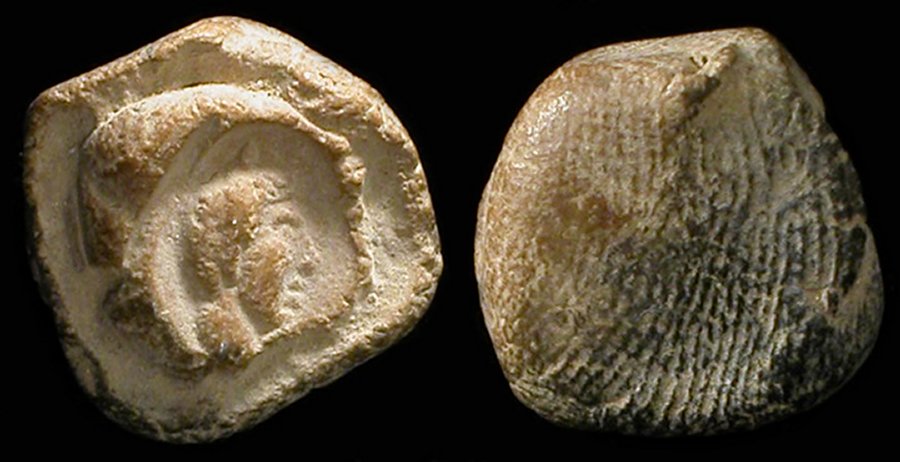 In the Greek and Roman periods, there have been found Many clay bullae have been unearthed during the excavations in the ancient ruins in Greece and various Roman sites. Photo via Forensics
In the Greek and Roman periods, there have been found Many clay bullae have been unearthed during the excavations in the ancient ruins in Greece and various Roman sites. Photo via Forensics
Prehistoric cave artists and pot makers used to "sign" their works with an impressed finger or thumbprint. A similar tradition was widely used by artisans who put fingerprints on ancient Babylonian seals, clay tablets, and pottery.
Archaeologists found fingerprints on Greek and Chinese pottery, bricks, and tiles in Babylon and Rome and imprints of fingers embossed on 6,000-year-old Chinese ceramics.
According to a Chinese historian, Kia Kung-Yen, who lived in the Tang period, there was a custom to put thumbprints on clay seals and inked fingerprints to "sign" legal documents regarding loans, debts, and contracts.
The oldest " survived " documents are dated to the 3rd century BC. The imprint, deeply embedded in the seal, is a significant identifying mark.
Ancient records from 14th century Persia inform that one government official, a physician, made an important discovery. Namely, he observed that no two fingerprints were exactly alike! As we see, he was one of many to attend to the fingerprints' unique feature.
Chinese records dating to the Qin Dynasty (221-206 BC) include details about using handprints as evidence during burglary investigations, and clay seals with friction ridge impressions were commonly used during both the Qin and Han Dynasties (221 BC - 220 AD). Could it mean that the ancient Chinese were fully aware of the uniqueness of a fingerprint?
If this is so, there is strong evidence that the Chinese knew the importance of the individuality of fingerprints a very long time ago.
Sir William James Herschel (1833 – 1917), whose father and grandfather were astronomers, decided to choose another career. He joined the East India Company and began his work as a British civil servant in India.
More and more interested in fingerprinting, Herschel made a variety of experiments and soon realized that a person's fingerprints do not change over time! In 1916, one year before he died, Sir Herschel published his work entitled "The Origin of Fingerprinting."
In "Advances in fingerprint technology," edited by Henry C. Lee R.E. Gaensslen, it is said that "Henry Faulds (1843-1930), a medical missionary for the Church of Scotland, was very interested in fingerprints. In one of his experiments, he removed the skin from the fingers (!) of his patients after fingerprinting them."
When the skin regrew on the fingertips, he fingerprinted them once more. He noted that the ridge detail was the same as before the skin was removed.
He concluded that fingerprint patterns were variable, but ridge detail was immutable.
Written by – A. Sutherland AncientPages.com Staff Writer
Copyright © AncientPages.com All rights reserved. This material may not be published, broadcast, rewritten or redistributed in whole or part without the express written permission of AncientPages.com
Expand for referencesReferences:
Hawthorne, Fingerprints: Analysis and Understanding
Castronovo, The Oxford Handbook of Nineteenth-Century American Literature
M, Specter, The New Yorker
Iranian.com
More From Ancient Pages
-
 Why Did Sages And Shamans Repeatedly Visit The Mysterious Finnish Pirunkirkko Cave (Devil’s Church)?
Archaeology | Nov 27, 2023
Why Did Sages And Shamans Repeatedly Visit The Mysterious Finnish Pirunkirkko Cave (Devil’s Church)?
Archaeology | Nov 27, 2023 -
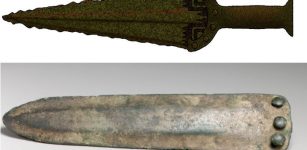 Scientists Can Finally Answer What Bronze Age Daggers Were Used For
Archaeology | Apr 29, 2022
Scientists Can Finally Answer What Bronze Age Daggers Were Used For
Archaeology | Apr 29, 2022 -
 Challenging Prehistoric Gender Roles – Women Were Hunters Too – Not Just Men
Archaeology | Oct 21, 2023
Challenging Prehistoric Gender Roles – Women Were Hunters Too – Not Just Men
Archaeology | Oct 21, 2023 -
 Mysterious Ancient Falicon Pyramid And Its Complex Obscure History
Featured Stories | Nov 28, 2018
Mysterious Ancient Falicon Pyramid And Its Complex Obscure History
Featured Stories | Nov 28, 2018 -
 On This Day In History: Western Roman Emperor Severus II Died – On Sep 16, 307
News | Sep 16, 2016
On This Day In History: Western Roman Emperor Severus II Died – On Sep 16, 307
News | Sep 16, 2016 -
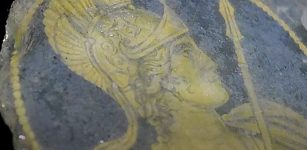 Extremely Rare Ancient Gold Glass With Goddess Roma Found During Subway Works In Rome
Archaeology | Feb 13, 2023
Extremely Rare Ancient Gold Glass With Goddess Roma Found During Subway Works In Rome
Archaeology | Feb 13, 2023 -
 The Opening Of Pandora’s Box May Have Been A Real Event
Featured Stories | Jun 22, 2021
The Opening Of Pandora’s Box May Have Been A Real Event
Featured Stories | Jun 22, 2021 -
 Early Human Communication May Have Been Influenced By Changing African Landscape – Anthropologists Say
Evolution | Dec 28, 2023
Early Human Communication May Have Been Influenced By Changing African Landscape – Anthropologists Say
Evolution | Dec 28, 2023 -
 Mystery Of The Watchers And Book Of Enoch – Fallen Angels And Their Secret Knowledge
Biblical Mysteries | Oct 27, 2017
Mystery Of The Watchers And Book Of Enoch – Fallen Angels And Their Secret Knowledge
Biblical Mysteries | Oct 27, 2017 -
 Mysterious Nine Worlds Of Yggdrasil – The Sacred Tree Of Life In Norse Mythology
Featured Stories | Mar 8, 2017
Mysterious Nine Worlds Of Yggdrasil – The Sacred Tree Of Life In Norse Mythology
Featured Stories | Mar 8, 2017 -
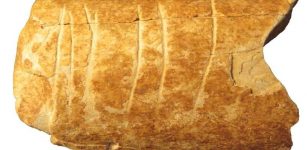 120,000-Year-Old Bone Etchings – Evidence Of The Earliest-Known Use Of Symbols
Archaeology | Feb 3, 2021
120,000-Year-Old Bone Etchings – Evidence Of The Earliest-Known Use Of Symbols
Archaeology | Feb 3, 2021 -
 Knowledge Of Divine Alien Beings And High-Tech In Ancient Egypt Described In Sacred Books And Papyrus – Reincarnation, Cloaking Technology And Space Travel – Part 2
Featured Stories | May 16, 2021
Knowledge Of Divine Alien Beings And High-Tech In Ancient Egypt Described In Sacred Books And Papyrus – Reincarnation, Cloaking Technology And Space Travel – Part 2
Featured Stories | May 16, 2021 -
 Vedic God Indra: Ruler Of Heavens And Tough Warrior Who Kills Evil Serpent Vritra
Featured Stories | Feb 1, 2019
Vedic God Indra: Ruler Of Heavens And Tough Warrior Who Kills Evil Serpent Vritra
Featured Stories | Feb 1, 2019 -
 Lao Tzu: Legendary Thinker And Founder Of Taoism Who Advocated Modesty, Self-Restraint And Balance
Chinese Mythology | Jul 13, 2019
Lao Tzu: Legendary Thinker And Founder Of Taoism Who Advocated Modesty, Self-Restraint And Balance
Chinese Mythology | Jul 13, 2019 -
 Thousand year old Pagan warrior tomb discovered in Poland
News | Aug 23, 2015
Thousand year old Pagan warrior tomb discovered in Poland
News | Aug 23, 2015 -
 Palnatoke – Founder Of The Jomsvikings Brotherhood, Legendary Danish Hero And Enemy Of King Harald Bluetooth
Historical Figures | Nov 2, 2016
Palnatoke – Founder Of The Jomsvikings Brotherhood, Legendary Danish Hero And Enemy Of King Harald Bluetooth
Historical Figures | Nov 2, 2016 -
 Grandfather Frost And Snow Maiden Bring Gifts On New Year’s Eve
Ancient Traditions And Customs | Dec 13, 2019
Grandfather Frost And Snow Maiden Bring Gifts On New Year’s Eve
Ancient Traditions And Customs | Dec 13, 2019 -
 ‘Green’ Saudi Arabia Was Home To A 350,000-Year-Old Human Settlement
Archaeology | May 18, 2021
‘Green’ Saudi Arabia Was Home To A 350,000-Year-Old Human Settlement
Archaeology | May 18, 2021 -
 Traces Of An Ancient Near East Civilization In America – Lost Tribes And Unorthodox Discoveries – Part 1
Civilizations | Nov 8, 2020
Traces Of An Ancient Near East Civilization In America – Lost Tribes And Unorthodox Discoveries – Part 1
Civilizations | Nov 8, 2020 -
 Mysterious Ancient Fortified City Of Djado On Dangerous Journey Across Sahara
Civilizations | Jun 4, 2023
Mysterious Ancient Fortified City Of Djado On Dangerous Journey Across Sahara
Civilizations | Jun 4, 2023
